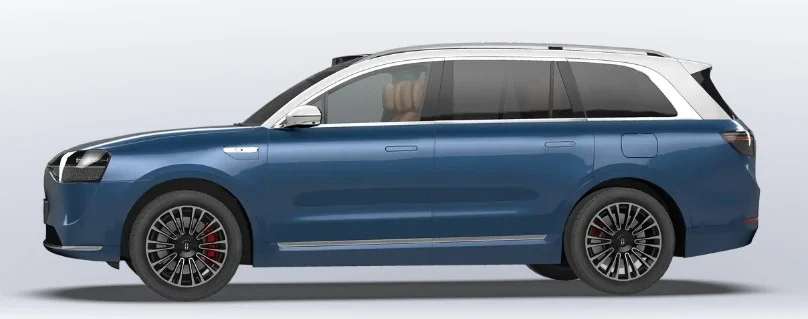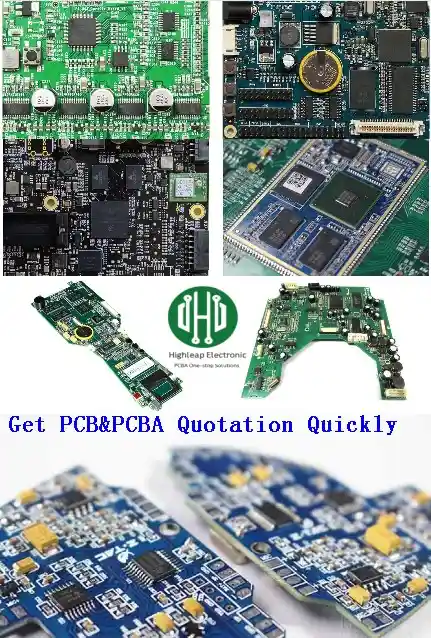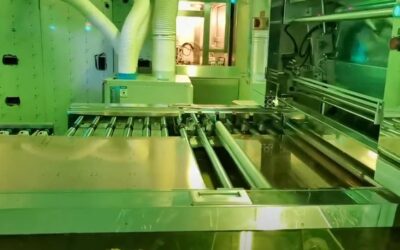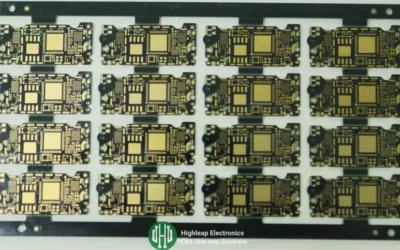Back to blog
Huawei’s Autonomous Car Help Transform the Industry

AITO M9 Autonomous Car
Huawei, known for its advancements in telecommunications, is making significant strides in the automotive industry, especially in the realm of autonomous driving. Their collaboration with AITO, a joint venture with Seres, showcases their commitment to integrating cutting-edge technology into modern vehicles. Here’s a detailed look at how Huawei’s autonomous driving solutions differentiate from traditional cars and enhance the user experience.
Advanced Autonomous Driving Technology
Huawei’s smart cars are equipped with the HUAWEI ADS 2.0 (Advanced Driving System), which incorporates several state-of-the-art technologies to facilitate autonomous driving:
- AI and Machine Learning: Huawei’s autonomous driving system uses AI algorithms to process vast amounts of data from sensors, enabling real-time decision-making and adjustments.
- Comprehensive Sensor Suite: The vehicles come with a combination of LIDAR, radar, and high-definition cameras, providing a 360-degree view of the surroundings and ensuring precise navigation and obstacle detection.
- High-Performance Computing: These systems require robust computing power to handle complex driving scenarios, which Huawei delivers through its advanced processors.
Enhanced Safety Features
Safety is a paramount concern in autonomous vehicles. Huawei’s smart cars are designed with numerous safety features:
- Collision Avoidance Systems: Using data from multiple sensors, the car can predict and prevent potential collisions by taking preemptive actions.
- Driver Assistance: While offering advanced autonomous features, the system also supports driver assistance, providing alerts and interventions when necessary to ensure the driver remains in control under specific conditions.
Intelligent Cockpit and User Experience
Huawei’s vehicles are not just about autonomous driving; they also offer an enriched user experience through intelligent cockpits:
- HarmonyOS Integration: The intelligent cockpit powered by HarmonyOS 3.0 creates a seamless and intuitive interaction between the driver and the vehicle. Features include voice commands, gesture controls, and personalized settings that adapt to the driver’s preferences.
- Seamless Connectivity: With 5G technology, these cars offer unparalleled connectivity, allowing for real-time navigation updates, streaming services, and enhanced communication capabilities.
- Personalization: AI learns from user behavior to offer tailored recommendations for routes, music, and in-car services, making each journey more enjoyable.
Sustainable and Efficient Powertrains
In addition to intelligent and autonomous features, Huawei’s vehicles emphasize sustainability:
- Electric Powertrains: Many of Huawei’s smart cars are electric, promoting reduced emissions and energy efficiency.
- Intelligent Energy Management: These vehicles come with advanced power management systems that optimize battery use and extend the vehicle’s range, supporting sustainable driving practices.
AITO M9 video display
Electronic Products in Huawei Vehicles
Huawei’s smart cars utilize a wide array of electronic products to achieve their advanced functionalities:
- HUAWEI Kirin Chips: These powerful processors enable high-speed computing for AI and autonomous driving features.
- LIDAR and Radar Systems: Essential for environment mapping and obstacle detection.
- HarmonyOS: Operating system for seamless integration of smart features.
- 5G Modules: For high-speed data connectivity.
- Battery Management Systems: For efficient power usage and extended range in electric vehicles.
- High-Resolution Displays: In intelligent cockpits for enhanced user interaction.
- Cameras and Sensors: Provide comprehensive environmental monitoring for autonomous driving and safety.

Huawei AITO self-driving car M7
Detailed Overview of Huawei’s Car Models
Huawei has strategically partnered with various automotive manufacturers to launch a range of intelligent vehicles. These models are equipped with Huawei’s advanced technologies, offering enhanced driving experiences and state-of-the-art features.
1. AITO M5
- Type: Medium-size SUV
- Powertrain Options: Plug-in hybrid and all-electric versions.
- Key Features: The AITO M5 is designed for luxury and performance. It features Huawei’s HarmonyOS-powered intelligent cockpit, offering seamless connectivity and an intuitive user interface. The all-electric version has a driving range of up to 620 kilometers (385 miles), surpassing many competitors. Advanced safety features, including Huawei’s ADS (Autonomous Driving System), provide a secure and reliable driving experience.
2. AITO M7
- Type: Large-size SUV
- Powertrain Options: Extended-range electric drive.
- Key Features: The AITO M7 integrates Huawei’s ADS 2.0 for autonomous driving, ensuring superior safety and convenience. It features a spacious and luxurious interior with flexible seating configurations, accommodating up to six passengers. The HarmonyOS smart cockpit enhances user interaction with features like voice commands, gesture controls, and personalized settings.
3. AITO M5 EV
- Type: Electric SUV
- Powertrain: Fully electric.
- Key Features: Similar to the M5 but with a focus on electric power. It includes advanced connectivity features, autonomous driving capabilities, and a range that meets the demands of modern drivers. The integration of Huawei’s smart technologies ensures a smooth and enjoyable driving experience.
4. AITO M9
- Type: Large-size SUV
- Powertrain Options: Plug-in hybrid and electric versions.
- Key Features: The M9 is designed for family comfort and long-distance travel. It features the latest autonomous driving technologies, a spacious interior, and luxurious amenities. The HarmonyOS-powered cockpit and advanced safety systems make it a top choice for those seeking both performance and comfort.
5. Luxeed S7
- Type: Electric Sedan
- Collaboration: Developed in partnership with Chery.
- Key Features: The Luxeed S7 features a high-performance DriveONE 800V silicon carbide power platform, providing exceptional acceleration and efficiency. It comes with intelligent air suspension, dynamic adaptive torque systems, and multiple driving modes. The sedan is designed for both sporty performance and comfort, making it versatile for various driving conditions.
Collaborations with Car Manufacturers
Seres:Huawei has a significant partnership with Seres, resulting in the AITO brand. This collaboration has produced models like the AITO M5, M7, and M9, integrating Huawei’s advanced ICT and autonomous driving technologies with Seres’ automotive expertise.
Chery:The partnership with Chery led to the development of the Luxeed S7, an electric sedan that combines Chery’s automotive experience with Huawei’s cutting-edge technology.
Avatr (Changan, Nio, and CATL):Huawei is collaborating with Avatr, a joint venture that includes Changan, Nio, and CATL, to develop new electric models. This partnership aims to create vehicles that leverage a new platform supporting various types and advanced electric powertrains.
BAIC BluePark:BAIC BluePark collaborates with Huawei to integrate smart selection technologies into high-end models, enhancing the user experience with advanced features and connectivity.
Honda:In the Chinese market, Honda incorporates Huawei’s components into their electric vehicle lineup, demonstrating a successful integration of traditional automotive engineering with Huawei’s advanced technological capabilities.
Driving Experience and PCB Integration
Huawei’s smart cars have received positive feedback for their driving experience, particularly for the stability and reliability of their autonomous driving systems. The HarmonyOS-powered smart cockpit offers intuitive controls and personalized settings, significantly enhancing user satisfaction.
PCBs (Printed Circuit Boards) play a crucial role in Huawei’s automotive technology. They support central computing systems, connectivity modules, sensor integration, and power management systems, enabling sophisticated functionalities and ensuring the performance and reliability of Huawei’s vehicles.

Huawei-Car-M7-Interior
A Transformative Experience with Huawei’s Automotive Technology
As an electronic engineer with years of experience driving traditional gasoline cars, my perspective on automotive technology was completely transformed after test-driving a Huawei car. This experience not only redefined my understanding of what a car can be but also rekindled my optimism for the future of the PCB industry.
The Role of PCBs in Huawei’s Automotive Technology
PCBs are the backbone of Huawei’s automotive technology, playing a crucial role in the functionality and performance of various components within the vehicle.
Central Computing Systems: High-performance PCBs are essential for the central processing units that control the car’s autonomous driving functions. These systems handle complex computations in real-time, enabling the car to make quick and accurate driving decisions.
Connectivity Modules: The robust V2X (vehicle-to-everything) communication capabilities of Huawei cars are facilitated by advanced PCBs. These modules ensure reliable data exchange between the vehicle and external infrastructure, enhancing safety and driving efficiency.
Sensor Integration: The integration of sensors such as cameras, LIDAR, and radar, which are critical for autonomous driving, relies on sophisticated PCBs. These boards support the seamless operation of these sensors, allowing the car to effectively perceive and react to its environment.
Power Management: Efficient power management is another area where PCBs are indispensable. They ensure the optimal performance and safety of electric and hybrid vehicles by managing the power requirements effectively, thereby extending the vehicle’s range and improving overall efficiency.
The Future of Mobility with Huawei
Looking ahead, Huawei envisions a future where their technological advancements lead to significant improvements in the automotive industry.
Increased Electrification: By 2030, it is expected that over half of global vehicle sales will be electric. Huawei’s focus on electric vehicles aligns with this trend, promising more sustainable and efficient transportation options.
Enhanced Computing Power: The computing power of vehicles is projected to exceed 5,000 TOPS (Tera Operations Per Second), which will support more advanced autonomous driving capabilities. This leap in processing power will enable vehicles to handle more complex tasks and improve the safety and reliability of autonomous systems.
Improved Network Speeds: In-vehicle network transmission speeds are anticipated to surpass 100 Gbps, enabling even more sophisticated connectivity and data processing. This will enhance the overall user experience, providing faster and more reliable access to information and entertainment.
After driving a Huawei car, I am convinced of the transformative potential of advanced automotive technology. The seamless integration of PCBs in these vehicles not only supports their sophisticated functionalities but also highlights the future potential of the PCB industry. This experience has opened my eyes to the remarkable advancements in modern automotive technology and has made me optimistic about the future of electronic engineering and its applications in everyday life.

Huawei AITO M5 self driving car
Fundamental Differences Between Huawei Cars and BYD
Huawei and BYD are two prominent players in the Chinese automotive market, but they differ fundamentally in their approaches, core competencies, and market offerings. Here’s an in-depth look at the key distinctions:
1. Core Business and Expertise
Huawei:
- Technology Focus: Huawei is primarily a technology company with a strong background in telecommunications and information technology. Their entry into the automotive industry leverages their expertise in ICT (Information and Communication Technology), AI, and cloud computing.
- Autonomous Driving and Connectivity: Huawei focuses on integrating advanced autonomous driving systems and connectivity solutions, such as their Huawei ADS (Autonomous Driving System) and HarmonyOS-powered smart cockpits. These features are designed to enhance the driving experience through advanced driver assistance systems and seamless connectivity.
BYD:
- Automotive Manufacturer: BYD (Build Your Dreams) is an established automotive manufacturer with a comprehensive focus on producing electric and hybrid vehicles. They have a deep expertise in battery technology and electric drivetrains.
- Battery Technology: BYD is a leader in battery manufacturing, known for their Blade Battery technology, which emphasizes safety, efficiency, and longevity. Their focus is on creating vehicles that are efficient, affordable, and environmentally friendly.
2. Product Range and Market Strategy
Huawei:
- Collaborative Ventures: Huawei collaborates with established car manufacturers such as Seres and Chery to produce vehicles. Models like the AITO M5, M7, and Luxeed S7 showcase these collaborations. Huawei provides the technological backbone, including autonomous driving features, connectivity, and infotainment systems.
- Technology Integration: The main selling point of Huawei’s vehicles is the integration of cutting-edge technology, making their cars highly advanced in terms of connectivity and autonomous driving capabilities.
BYD:
- Diverse Vehicle Portfolio: BYD produces a wide range of electric vehicles (EVs) and plug-in hybrids (PHEVs), including sedans, SUVs, and buses. They offer models like the Tang, Han, and Qin, which cater to different segments of the market.
- Vertical Integration: BYD’s strategy involves vertical integration, controlling the entire supply chain from battery production to vehicle manufacturing. This allows them to optimize costs and ensure high quality across all components of their vehicles.
3. Market Position and Brand Identity
Huawei:
- Tech Innovator: Huawei positions itself as a tech innovator in the automotive industry, focusing on bringing the latest ICT advancements to vehicles. Their branding emphasizes the integration of smart technology and advanced driving systems.
- New Entrant: As a relatively new entrant in the automotive market, Huawei is leveraging its technological strengths to differentiate itself from traditional car manufacturers.
BYD:
- Established EV Brand: BYD is well-established in the EV market and is recognized globally for its contributions to electric mobility. Their brand identity is built on their extensive experience in producing reliable and efficient electric vehicles.
- Sustainability Focus: BYD emphasizes sustainability and environmental friendliness, highlighting their efforts in reducing emissions and promoting green energy through their EV offerings.
The fundamental differences between Huawei and BYD in the automotive market stem from their core business areas, product strategies, and market positioning. Huawei leverages its technological prowess to offer highly connected and autonomous vehicles through collaborations, while BYD focuses on producing a broad range of electric vehicles with a strong emphasis on battery technology and sustainability. These distinctions shape their respective approaches to transforming the automotive industry and catering to the needs of modern consumers.

Huawei Car M5 Interior
How Huawei is Transforming the Chinese Automotive Market
Huawei’s entry into the automotive market is creating ripples across the industry, significantly altering the dynamics of the Chinese car market. Their innovative approach, integrating advanced technology with automotive manufacturing, is setting new standards and driving widespread change.
Huawei’s commitment to R&D and innovation is a game-changer. By leveraging their expertise in ICT, they have introduced features like the HarmonyOS smart cockpit, which provides seamless connectivity and a user-friendly interface. This integration is not just about adding new gadgets; it transforms the entire driving experience, making it more interactive and personalized. Furthermore, the adoption of 5G technology ensures that Huawei’s cars are at the forefront of the connected vehicle revolution, offering real-time data exchange and enhanced vehicle-to-everything (V2X) communication.
In addition, Huawei’s partnerships with established automotive manufacturers like Seres and Chery are accelerating the pace of innovation in the industry. These collaborations combine Huawei’s technological prowess with the automotive expertise of their partners, resulting in the rapid development and deployment of new vehicle models. The AITO M5, M7, and M9, as well as the Luxeed S7, exemplify how these partnerships can yield high-quality, technologically advanced vehicles that meet the evolving demands of consumers. These efforts are not only enhancing the competitiveness of the Chinese automotive industry but also positioning it as a leader in the global market.
Conclusion
Huawei’s entry into the automotive market has significantly transformed the Chinese automotive industry by integrating cutting-edge technology with traditional vehicle manufacturing. Known for its advancements in telecommunications, Huawei leverages its expertise in ICT, AI, and cloud computing to introduce state-of-the-art autonomous driving systems and smart cockpits powered by HarmonyOS. These features enhance the user experience by providing seamless connectivity, real-time data exchange, and advanced driver assistance.
FAQ
1. What unique features does the HarmonyOS bring to Huawei vehicles?
HarmonyOS, also featured in devices like the Huawei P70 Pro and Huawei Watch, brings a seamless and integrated user experience to Huawei vehicles. This operating system connects various smart devices, allowing drivers to control and interact with their cars through voice commands, gesture controls, and personalized settings. HarmonyOS enhances the in-car experience with real-time navigation, entertainment options, and connectivity with other Huawei devices, creating a smart ecosystem that extends beyond the vehicle.
2. How does Huawei’s ADS (Advanced Driving System) ensure safety and reliability in autonomous driving?
Huawei’s ADS, powered by the same high-performance processors found in devices like the Huawei P60 Pro, uses AI and machine learning to process data from a comprehensive sensor suite including LIDAR, radar, and high-definition cameras. This system ensures real-time decision-making and adjustments, providing accurate navigation and obstacle detection. Enhanced safety features such as collision avoidance and driver assistance systems offer a secure driving experience, significantly reducing the risk of accidents.
3. What are the benefits of V2X communication in Huawei’s new energy vehicles?
V2X (vehicle-to-everything) communication in Huawei’s new energy vehicles facilitates robust data exchange between the car, other vehicles, and road infrastructure. This technology, also supported by Huawei’s advancements in 5G connectivity found in their smartphones and wearables like the Huawei Watch, improves traffic efficiency, enhances safety by providing real-time alerts, and integrates with smart city infrastructures. This connectivity supports a more intelligent and coordinated transportation system.
4. How do Huawei’s electric powertrains contribute to environmental sustainability?
Huawei’s focus on new energy vehicles, including electric powertrains, plays a crucial role in promoting environmental sustainability. These vehicles, equipped with advanced battery management systems, optimize power usage and extend driving range. By reducing reliance on fossil fuels and minimizing emissions, Huawei’s electric vehicles align with global sustainability goals, contributing to cleaner air and a reduced carbon footprint.
5. How do Huawei’s collaborations with automotive manufacturers impact the development of new vehicle models?
Huawei’s partnerships with manufacturers like Seres and Chery leverage combined expertise to develop innovative new energy vehicle models. These collaborations integrate Huawei’s advanced technologies, such as autonomous driving systems and smart cockpits powered by HarmonyOS, into new cars. This synergy accelerates the creation of high-quality, technologically advanced vehicles that meet evolving consumer demands and enhance the competitiveness of the automotive industry. These vehicles benefit from Huawei’s extensive R&D capabilities, ensuring cutting-edge features and reliable performance.
Related Articles
Exploring PCB Surface Treatment: The Significance of ENIG and DIG
This comprehensive analysis will delve into the Electroless Nickel Immersion Gold (ENIG) process, exploring why it is increasingly becoming the go-to choice for PCB manufacturers globally.
Enhancing PCB Reliability: Reduce PCB Dry Film Penetration
Revolutionize your PCB manufacturing with our cutting-edge PCB dry film technology!
High-Quality Rigid PCB Circuit Board Fabrication Services
Rigid PCBs are the conventional type of FR4 PCB, comprising a rigid substrate typically made of materials like fiberglass.
Take a Quick Quote




